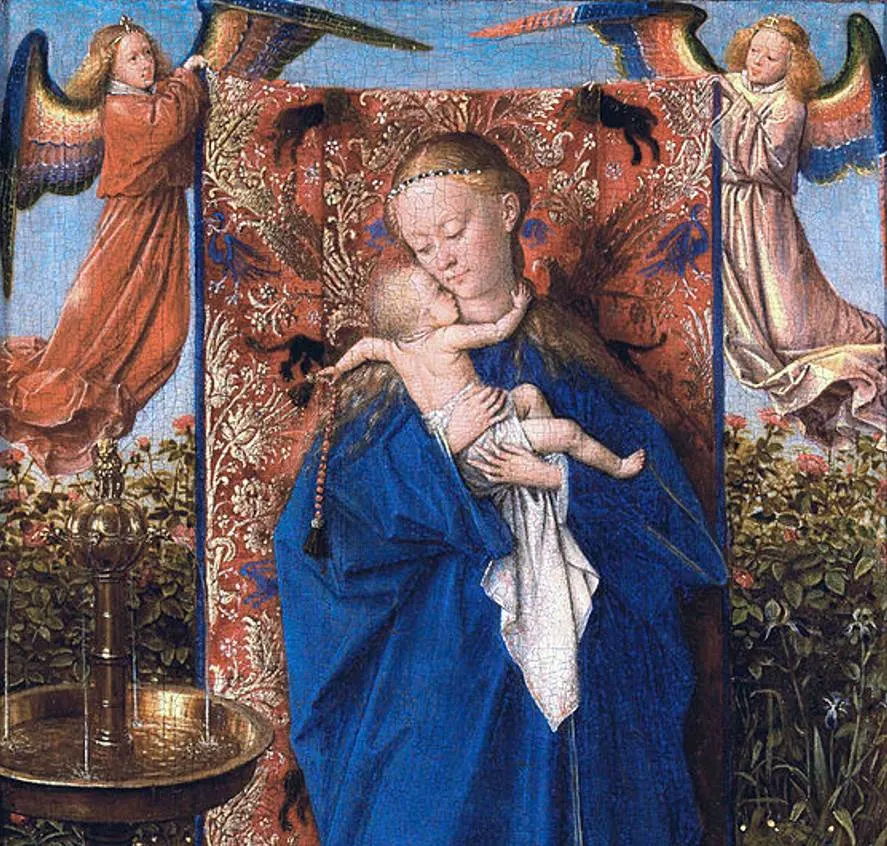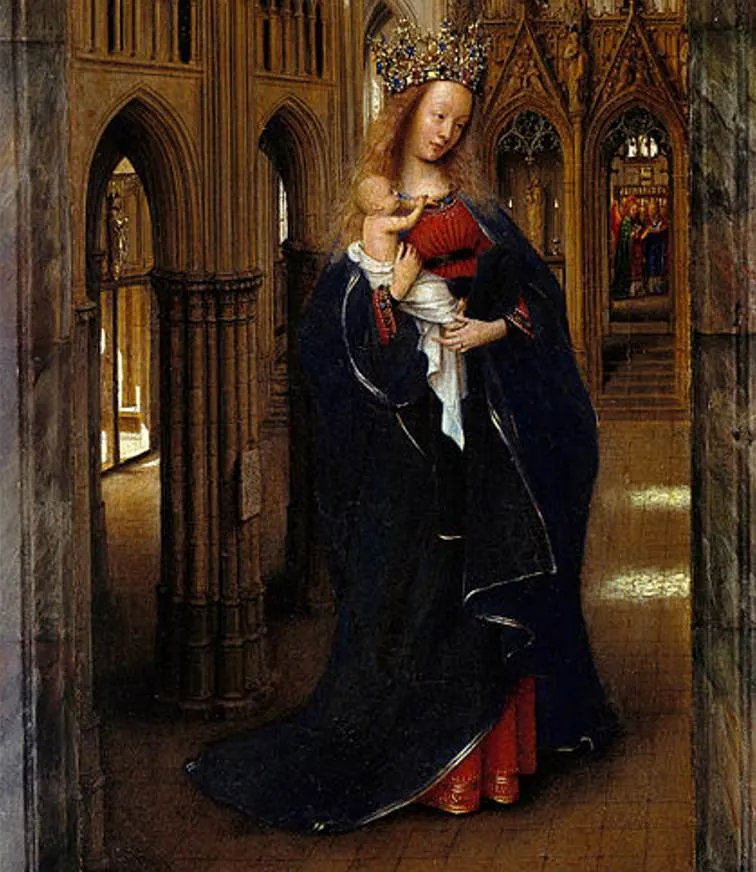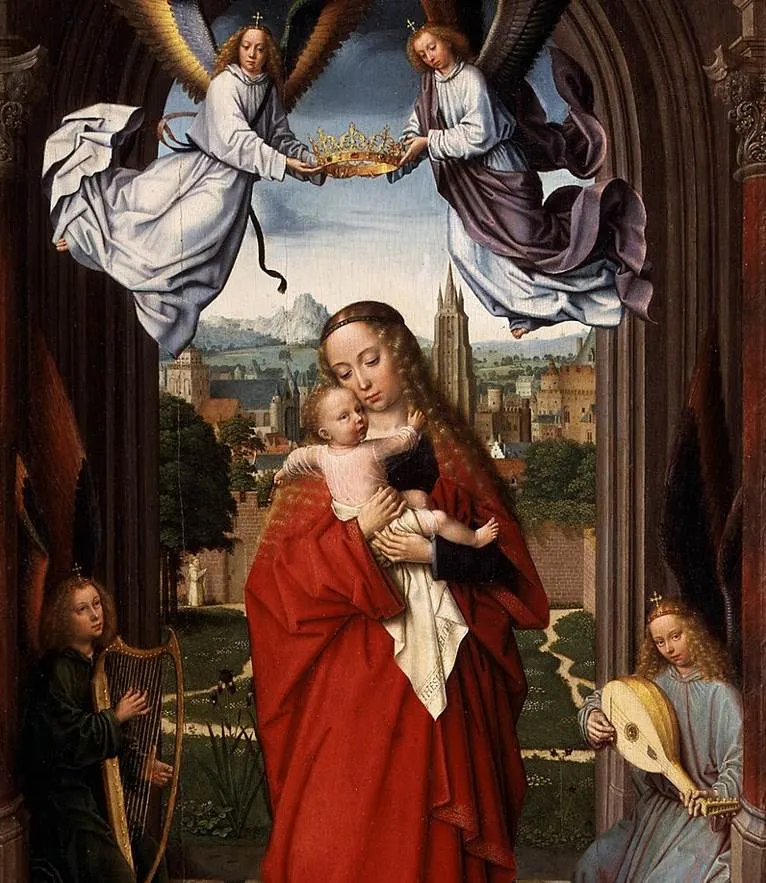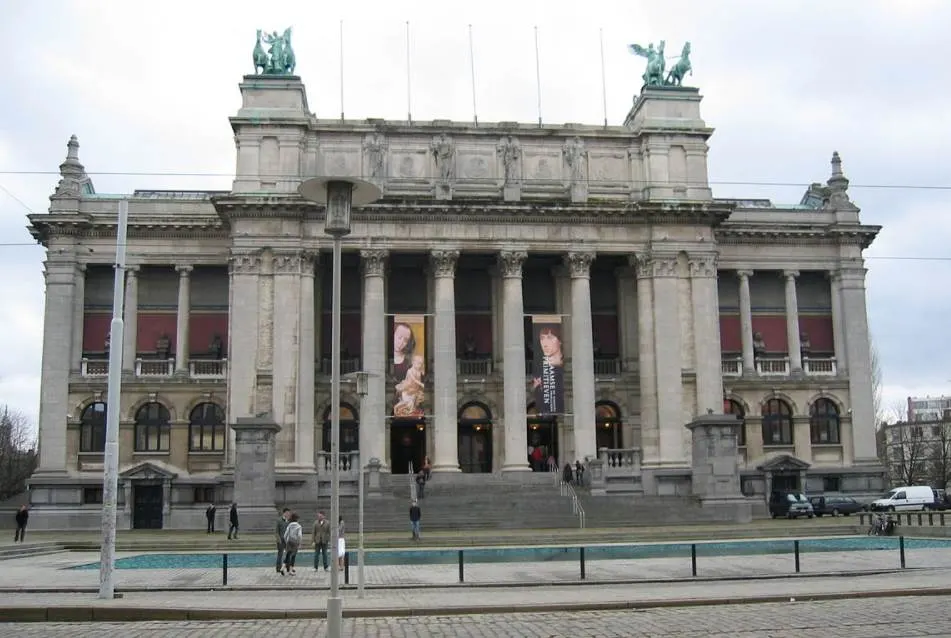A renowned Flemish artist shaped the direction of painting in the northern Renaissance in the early 15th century.
Jan van Eyck (1390-1441) moved away from the idealized medieval style of painting to produce natural figures. He achieved that by using oil, a material that was still uncommon during this period.
In this article, we’ll take a closer look at some of the most interesting facts about Madonna at the Fountain, a fascinating painting by one of the greatest Renaissance artists in history.
1. It was painted during the final years of the artist’s life
Jan van Eyck was born before 1390 (the exact date remains unknown) in Maaseik, a town in modern-day Belgium. This is also how he got his name because “van Eyck” translates to “From Eyck.”
He became the court painter of Phillip the Good (1396-1467), the Duke of Burgundy, in 1425, shortly after he permanently settled in Bruges. This is the city where he lived and worked for the rest of his life.
He was also a diplomat for Phillip, a function that allowed him to travel quite a bit, including a trip to Italy in the late 1420s.
He would earn a lot of commissions from rich Italian merchants as well as Bruges was one of the main commercial centers in Europe at the time. The Arnolfini Portrait is perhaps the most famous of them all.
Madonna at the fountain was completed in the year 1439, just two years before the artist passed away.

2. It depicts the Virgin Mary and Jesus near the fountain of life
As the name of the painting suggests, we can see the Virgin Mary as she is holding her baby Jesus Christ while standing near the fountain of life. This is a symbol in Christianity that is related to baptism.

The setting is an enclosed garden referred to as a “Hortus Conclusus,” a common location to depict Mary in medieval and Renaissance paintings.
What’s remarkable about this painting is that the Virgin Mary is depicted wearing a blue robe. In just about all of his other works, including, for example, the “Dresden Triptych” (1437) and the “Madonna of Chancellor Rolin” (1435), Jan van Eyck depicted her wearing blue.
This color was often used by Italian artists to depict the Virgin Mary and could hint at the fact that van Eyck was influenced by Italian paintings.
3. The baby Jesus holds an object that refers to a set of prayers
The artist often integrated various symbols related to Christianity in his paintings. He was limited with this painting because it’s very small and has a rather simple composition compared to many of his other works.
We can see the Madonna and 2 angels behind her as they are holding up a richly decorated cloth of honor. This forms the background of the main figures of the painting, a common depiction in medieval and Renaissance art.
The main religious symbols are the rose bush behind the main figures and the rosary held in Jesus’ left hand. The rosary was a popular attribute during this time in history and is a reference to a set of prayers.
This in combination with the small size of the painting might mean that it was commissioned to serve as a praying aid.

4. The painting still resides in its original frame
The artist often signed his paintings with what is arguably one of the most distinctive signatures in art history which reads “ALS IXH CAN.” This translates to “As I Can” and probably means that he painted it as good as he could.
What’s remarkable about Madonna at the Fountain is that it’s still in its original 15th-century frame. The complete signature on the frame features his motto, the artist’s name, and the date when the work was completed:
ALS IXH CAN, JOHES DE EYCK ME FECIT + [COM]PLEVIT ANNO 1439

5. The composition of the figures might reveal a Byzantine influence
When you take a closer look at the oeuvre of Jan van Eyck then you’ll notice that just about all of his Madonna paintings depict the Virgin Mary as she is sitting down. This was the most common composition for Madonna paintings at the time.
This makes Madonna at the Fountain and a similar painting called “Madonna at the Church” (1438-1440) unique works of art by Jan van Eyck as they both depict a standing Mary.
Art historians assume that van Eyck was influenced by Byzantine art as Mary was often depicted standing up in Byzantine icons. He might have seen them on his trip to Italy in the late 1420s.
Another explanation could be a political development a the time. His boss, Phillip the Good, was attempting to restore sour relationships with the Greek Orthodox Church during this period.
One of his portrait paintings called “Portrait of Cardinal Niccolò Albergati” (1431) depicts a man who was heavily involved in this diplomatic mission.

6. The painting has been copied multiple times
The standing Madonna was just one of the many innovations that can be credited to the name of Jan van Eyck. This composition quickly became popular and was copied multiple times during the following decades and beyond.
One of the most remarkable copies is a painting called “Virgin and Child with Four Angels” by Gerard David. This Early Netherlandish master was extremely popular during his lifetime and ran two huge workshops in Antwerp and Bruges.
David intended to merely create an exact copy of van Eyck’s work but he ended up adding 4 angels and a magnificent background depicting some of the most famous buildings in Bruges. This painting is now in the collection of the MET in New York City.

7. How big is Madonna at the Fountain by Jan van Eyck?
The theory suggests that this painting was commissioned to serve as a prayer aid is strengthened by the fact that it’s a very small work of art. Despite its minuscule size, it’s not even the smallest painting in the oeuvre of Jan van Eyck.
This honor is reserved for a painting called “Saint Francis Receiving the Stigmata” (1430-1432) which has dimensions of 12.7 × 14.6 centimeters (5 × 5.7 inches). It can be found at the Philadelphia Museum of Art.
Madonna at the Fountain by Jan van Eyck is an oil-on-panel painting that has dimensions of 19 x 12 centimeters (7.5 x 4.75 inches).
8. Where is the painting located today?
If you want to admire one of the greatest collections of art from both Flemish and Belgian artists along with Dutch artists, then you should head over to the city of Antwerp.
The Royal Museum of Fine Arts Antwerp was established in 1820 and houses artworks produced by Jan van Eyck, Peter Paul Rubens, and James Ensor, to name just a few local artists.
The museum in Antwerp was been closed since 2011 for renovations but has been reopened on September 24, 2022.

